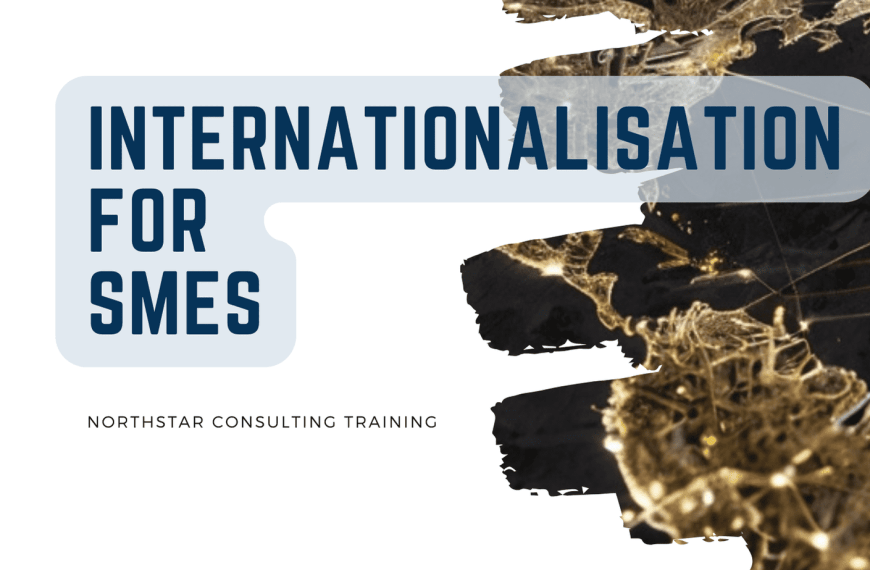Skip to content
July in Review: Focus on Commercialisation
And One Thing Every EU/Asia-Focused SME Is Underestimating
As we close out July, we’re reflecting on a month shaped by one critical question: What does it really take to make a product market-ready
From prototyping non-tech inventions to pricing psychology, from EU compliance to venture capital trends, we’ve explored the practical steps SMEs must take to commercialise confidently.
But the most important insight to emerge this month is this: commercial success isn’t just about having a great product. It’s about communicating it in the right cultural context.
Here’s what we learned — and why many SMEs still overlook one of the most important drivers of success: cultural fit.
July’s Key Commercialisation Insights
Prototyping: Test Smart, Not Hard
We started July by challenging the assumption that innovation requires large budgets. For niche and non-tech SMEs, lean prototyping using real user feedback, Instagram testing, and low-cost MVPs is not just possible — it’s essential.
“You don’t need a lab. You need a conversation.”
— NorthStar, How to Prototype Your Non-Tech Invention Efficiently
This approach aligns with PwC’s 2025 Innovation Benchmark, which found that 73% of successful product launches came from SMEs that prioritised customer co-creation over internal R&D.
Pricing: A Strategic Brand Signal
We explored how pricing sends a strong brand signal — particularly in trust-sensitive markets. When pricing is based on perceived value and communicated with clarity, it can foster credibility, not alienation.
Uswitch (2025) reports that 86% of UK entrepreneurs say subscription models improve cash flow, but only when the pricing structure reflects real value.
Stay Ahead of the Curve
Subscribe to our newsletter for exclusive access to our new report:
“The State of Advertising and Marketing in 2025–2026” — free for all subscribers.
Or follow us on Substack for deeper dives and strategy briefs every Monday and Wednesday.
NorthStar Consulting helps SMEs translate their uniqueness into commercial strength — through data-driven strategy, compliance, and cross-border planning.
Explore our SME Navigator to learn how we can support your growth journey.
“Cross-border success begins with cultural humility and a localisation strategy that goes beyond translation.”
The Overlooked Gap: Cultural Commercialisation
Even the best-prepared SMEs — those with validated products, strong pricing models, full compliance, and investor interest — often fall short in one critical area: cultural adaptation.
Most SMEs assume translation is enough. It’s not.
Understanding Regional Expectations
Europe:
Asia:
What Happens When You Get It Wrong?
Maserati’s staggering sales decline is a good example.
A 57% drop in 2024 (vs 2023) followed by a further 48% loss in 2025—can be traced back to a fundamental misunderstanding of its target market.
While the company delivered impressive performance with models like the MC20, the perceived quality of the brand was destroyed by the secondary market. When a luxury vehicle loses over 40% of its initial value so quickly, it’s not viewed as normal wear-and-tear; it’s viewed as a failure of exclusivity.
Asian luxury buyers treat their vehicles as investments in status. A high residual value confirms that the car is eternally desirable. Maserati failed to meet this regional definition of luxury, focusing on horsepower and ignoring the single most important metric: financial stability as a marker of true, sustained prestige.
A Practical Solution: Run a Cultural Fit Audit
Before entering a new market, SMEs should evaluate their business across four cultural dimensions:
- Visual and UX design
- Does your brand presentation align with local aesthetics and expectations?
- Trust signals
- Are you using the right regional certifications or local partnerships to build credibility?
- Pricing structure
- Is your pricing model culturally appropriate?
- Local validation
- Are you working with recognised local partners or authorities
Stay Ahead of the Curve
Subscribe to our newsletter for exclusive access to our new report:
“The State of Advertising and Marketing in 2025–2026” — free for all subscribers.
Or follow us on Substack for deeper dives and strategy briefs every Monday and Wednesday.
NorthStar Consulting helps SMEs translate their uniqueness into commercial strength — through data-driven strategy, compliance, and cross-border planning.
Explore our SME Navigator to learn how we can support your growth journey.
“In 2025, where trust drives every buying decision,
how you price matters just as much as what you sell.”
Compliance: A Trust-Building Asset
EU regulations — such as the Responsible Person requirement for cosmetics or cookie consent rules — are often viewed as barriers. But we reframed compliance as a credibility booster.
In Germany, 68% of consumers say they’re more likely to buy from a brand that visibly demonstrates EU compliance (Statista, Q1 2025).
France’s crackdown on greenwashing has turned transparency into both a legal and reputational requirement.
For international SMEs, compliance is increasingly becoming a non-negotiable competitive advantage.
Venture Capital: Shifting Toward Sustainable Models
Global VC funding reached £95 billion in the first half of 2025, the highest in ten quarters.
While the UK led Europe with £4.1 billion in deals, the funding landscape has changed.
Today’s investors are backing ventures with clear unit economics and long-term viability — not just rapid growth.
Recent examples include:
- CIMware (Bengaluru), which raised $2.3M for sustainable networking infrastructure.
- Meesho (India), which secured $270M from Tiger Global, not for expansion, but for profitability and sustainable business models.
The message is clear: investors now expect data-backed, impact-driven plans.
Internationalisation: Localisation Over Expansion
Cross-border growth has become a strategic imperative.
In 2025, scaling internationally is not a question of if, but how.
From UK brands exploring Portugal’s tech ecosystem to Asian startups targeting Scandinavian markets, internationalisation is accelerating.
But exporting alone is not enough. Winning in new markets requires cultural adaptation — not just operational readiness.
“Cross-border success begins with cultural humility and a localisation strategy that goes beyond translation.”
The Overlooked Gap: Cultural Commercialisation
Even the best-prepared SMEs — those with validated products, strong pricing models, full compliance, and investor interest — often fall short in one critical area: cultural adaptation.
Most SMEs assume translation is enough. It’s not.
Understanding Regional Expectations
Europe:
Asia:
What Happens When You Get It Wrong?
Maserati’s staggering sales decline is a good example.
A 57% drop in 2024 (vs 2023) followed by a further 48% loss in 2025—can be traced back to a fundamental misunderstanding of its target market.
While the company delivered impressive performance with models like the MC20, the perceived quality of the brand was destroyed by the secondary market. When a luxury vehicle loses over 40% of its initial value so quickly, it’s not viewed as normal wear-and-tear; it’s viewed as a failure of exclusivity.
Asian luxury buyers treat their vehicles as investments in status. A high residual value confirms that the car is eternally desirable. Maserati failed to meet this regional definition of luxury, focusing on horsepower and ignoring the single most important metric: financial stability as a marker of true, sustained prestige.
A Practical Solution: Run a Cultural Fit Audit
Before entering a new market, SMEs should evaluate their business across four cultural dimensions:
- Visual and UX design
- Does your brand presentation align with local aesthetics and expectations?
- Trust signals
- Are you using the right regional certifications or local partnerships to build credibility?
- Pricing structure
- Is your pricing model culturally appropriate?
- Local validation
- Are you working with recognised local partners or authorities
Stay Ahead of the Curve
Subscribe to our newsletter for exclusive access to our new report:
“The State of Advertising and Marketing in 2025–2026” — free for all subscribers.
Or follow us on Substack for deeper dives and strategy briefs every Monday and Wednesday.
NorthStar Consulting helps SMEs translate their uniqueness into commercial strength — through data-driven strategy, compliance, and cross-border planning.
Explore our SME Navigator to learn how we can support your growth journey.
And One Thing Every EU/Asia-Focused SME Is Underestimating
As we close out July, we’re reflecting on a month shaped by one critical question: What does it really take to make a product market-ready
From prototyping non-tech inventions to pricing psychology, from EU compliance to venture capital trends, we’ve explored the practical steps SMEs must take to commercialise confidently.
But the most important insight to emerge this month is this: commercial success isn’t just about having a great product. It’s about communicating it in the right cultural context.
Here’s what we learned — and why many SMEs still overlook one of the most important drivers of success: cultural fit.
July’s Key Commercialisation Insights
Prototyping: Test Smart, Not Hard
We started July by challenging the assumption that innovation requires large budgets. For niche and non-tech SMEs, lean prototyping using real user feedback, Instagram testing, and low-cost MVPs is not just possible — it’s essential.
“You don’t need a lab. You need a conversation.”
— NorthStar, How to Prototype Your Non-Tech Invention Efficiently
This approach aligns with PwC’s 2025 Innovation Benchmark, which found that 73% of successful product launches came from SMEs that prioritised customer co-creation over internal R&D.
Pricing: A Strategic Brand Signal
We explored how pricing sends a strong brand signal — particularly in trust-sensitive markets. When pricing is based on perceived value and communicated with clarity, it can foster credibility, not alienation.
Uswitch (2025) reports that 86% of UK entrepreneurs say subscription models improve cash flow, but only when the pricing structure reflects real value.
Stay Ahead of the Curve
Subscribe to our newsletter for exclusive access to our new report:
“The State of Advertising and Marketing in 2025–2026” — free for all subscribers.
Or follow us on Substack for deeper dives and strategy briefs every Monday and Wednesday.
NorthStar Consulting helps SMEs translate their uniqueness into commercial strength — through data-driven strategy, compliance, and cross-border planning.
Explore our SME Navigator to learn how we can support your growth journey.
“Cross-border success begins with cultural humility and a localisation strategy that goes beyond translation.”
The Overlooked Gap: Cultural Commercialisation
Even the best-prepared SMEs — those with validated products, strong pricing models, full compliance, and investor interest — often fall short in one critical area: cultural adaptation.
Most SMEs assume translation is enough. It’s not.
Understanding Regional Expectations
Europe:
Asia:
What Happens When You Get It Wrong?
Maserati’s staggering sales decline is a good example.
A 57% drop in 2024 (vs 2023) followed by a further 48% loss in 2025—can be traced back to a fundamental misunderstanding of its target market.
While the company delivered impressive performance with models like the MC20, the perceived quality of the brand was destroyed by the secondary market. When a luxury vehicle loses over 40% of its initial value so quickly, it’s not viewed as normal wear-and-tear; it’s viewed as a failure of exclusivity.
Asian luxury buyers treat their vehicles as investments in status. A high residual value confirms that the car is eternally desirable. Maserati failed to meet this regional definition of luxury, focusing on horsepower and ignoring the single most important metric: financial stability as a marker of true, sustained prestige.
A Practical Solution: Run a Cultural Fit Audit
Before entering a new market, SMEs should evaluate their business across four cultural dimensions:
- Visual and UX design
- Does your brand presentation align with local aesthetics and expectations?
- Trust signals
- Are you using the right regional certifications or local partnerships to build credibility?
- Pricing structure
- Is your pricing model culturally appropriate?
- Local validation
- Are you working with recognised local partners or authorities
Stay Ahead of the Curve
Subscribe to our newsletter for exclusive access to our new report:
“The State of Advertising and Marketing in 2025–2026” — free for all subscribers.
Or follow us on Substack for deeper dives and strategy briefs every Monday and Wednesday.
NorthStar Consulting helps SMEs translate their uniqueness into commercial strength — through data-driven strategy, compliance, and cross-border planning.
Explore our SME Navigator to learn how we can support your growth journey.
“In 2025, where trust drives every buying decision,
how you price matters just as much as what you sell.”
Compliance: A Trust-Building Asset
EU regulations — such as the Responsible Person requirement for cosmetics or cookie consent rules — are often viewed as barriers. But we reframed compliance as a credibility booster.
In Germany, 68% of consumers say they’re more likely to buy from a brand that visibly demonstrates EU compliance (Statista, Q1 2025).
France’s crackdown on greenwashing has turned transparency into both a legal and reputational requirement.
For international SMEs, compliance is increasingly becoming a non-negotiable competitive advantage.
Venture Capital: Shifting Toward Sustainable Models
Global VC funding reached £95 billion in the first half of 2025, the highest in ten quarters.
While the UK led Europe with £4.1 billion in deals, the funding landscape has changed.
Today’s investors are backing ventures with clear unit economics and long-term viability — not just rapid growth.
Recent examples include:
- CIMware (Bengaluru), which raised $2.3M for sustainable networking infrastructure.
- Meesho (India), which secured $270M from Tiger Global, not for expansion, but for profitability and sustainable business models.
The message is clear: investors now expect data-backed, impact-driven plans.
Internationalisation: Localisation Over Expansion
Cross-border growth has become a strategic imperative.
In 2025, scaling internationally is not a question of if, but how.
From UK brands exploring Portugal’s tech ecosystem to Asian startups targeting Scandinavian markets, internationalisation is accelerating.
But exporting alone is not enough. Winning in new markets requires cultural adaptation — not just operational readiness.
“Cross-border success begins with cultural humility and a localisation strategy that goes beyond translation.”
The Overlooked Gap: Cultural Commercialisation
Even the best-prepared SMEs — those with validated products, strong pricing models, full compliance, and investor interest — often fall short in one critical area: cultural adaptation.
Most SMEs assume translation is enough. It’s not.
Understanding Regional Expectations
Europe:
Asia:
What Happens When You Get It Wrong?
Maserati’s staggering sales decline is a good example.
A 57% drop in 2024 (vs 2023) followed by a further 48% loss in 2025—can be traced back to a fundamental misunderstanding of its target market.
While the company delivered impressive performance with models like the MC20, the perceived quality of the brand was destroyed by the secondary market. When a luxury vehicle loses over 40% of its initial value so quickly, it’s not viewed as normal wear-and-tear; it’s viewed as a failure of exclusivity.
Asian luxury buyers treat their vehicles as investments in status. A high residual value confirms that the car is eternally desirable. Maserati failed to meet this regional definition of luxury, focusing on horsepower and ignoring the single most important metric: financial stability as a marker of true, sustained prestige.
A Practical Solution: Run a Cultural Fit Audit
Before entering a new market, SMEs should evaluate their business across four cultural dimensions:
- Visual and UX design
- Does your brand presentation align with local aesthetics and expectations?
- Trust signals
- Are you using the right regional certifications or local partnerships to build credibility?
- Pricing structure
- Is your pricing model culturally appropriate?
- Local validation
- Are you working with recognised local partners or authorities
Stay Ahead of the Curve
Subscribe to our newsletter for exclusive access to our new report:
“The State of Advertising and Marketing in 2025–2026” — free for all subscribers.
Or follow us on Substack for deeper dives and strategy briefs every Monday and Wednesday.
NorthStar Consulting helps SMEs translate their uniqueness into commercial strength — through data-driven strategy, compliance, and cross-border planning.
Explore our SME Navigator to learn how we can support your growth journey.
A July 2025 recap: What agile SMEs across Europe and Asia are getting right about commercialisation and the cultural blind spot that could limit global growth




